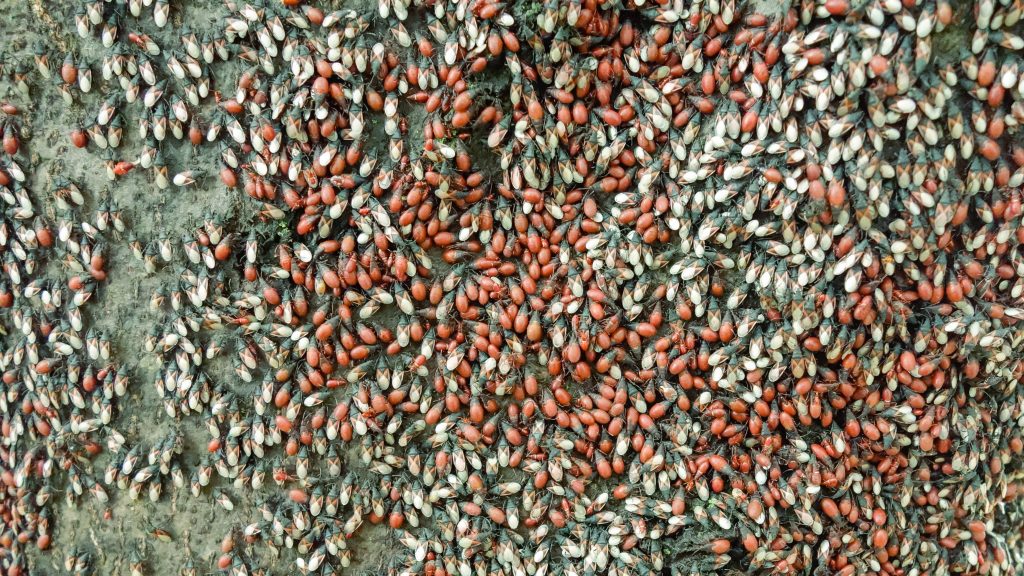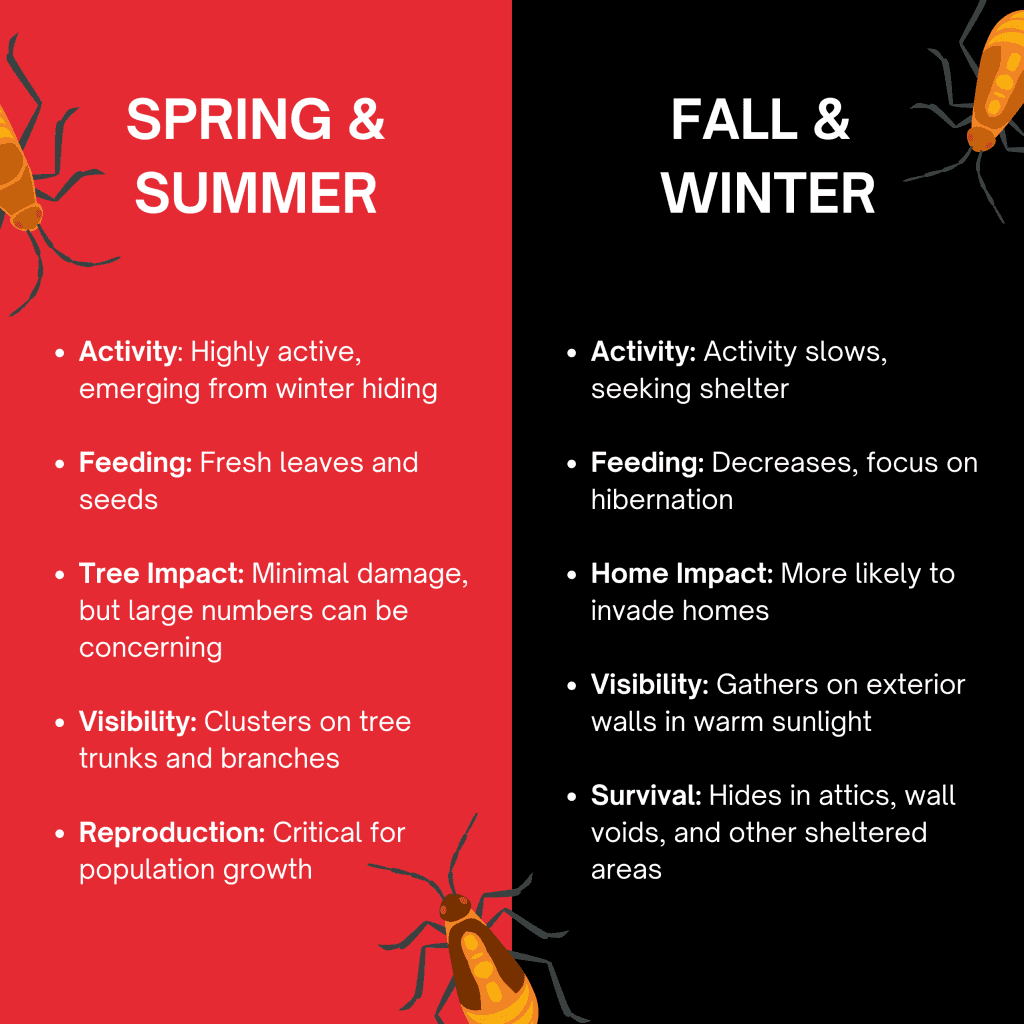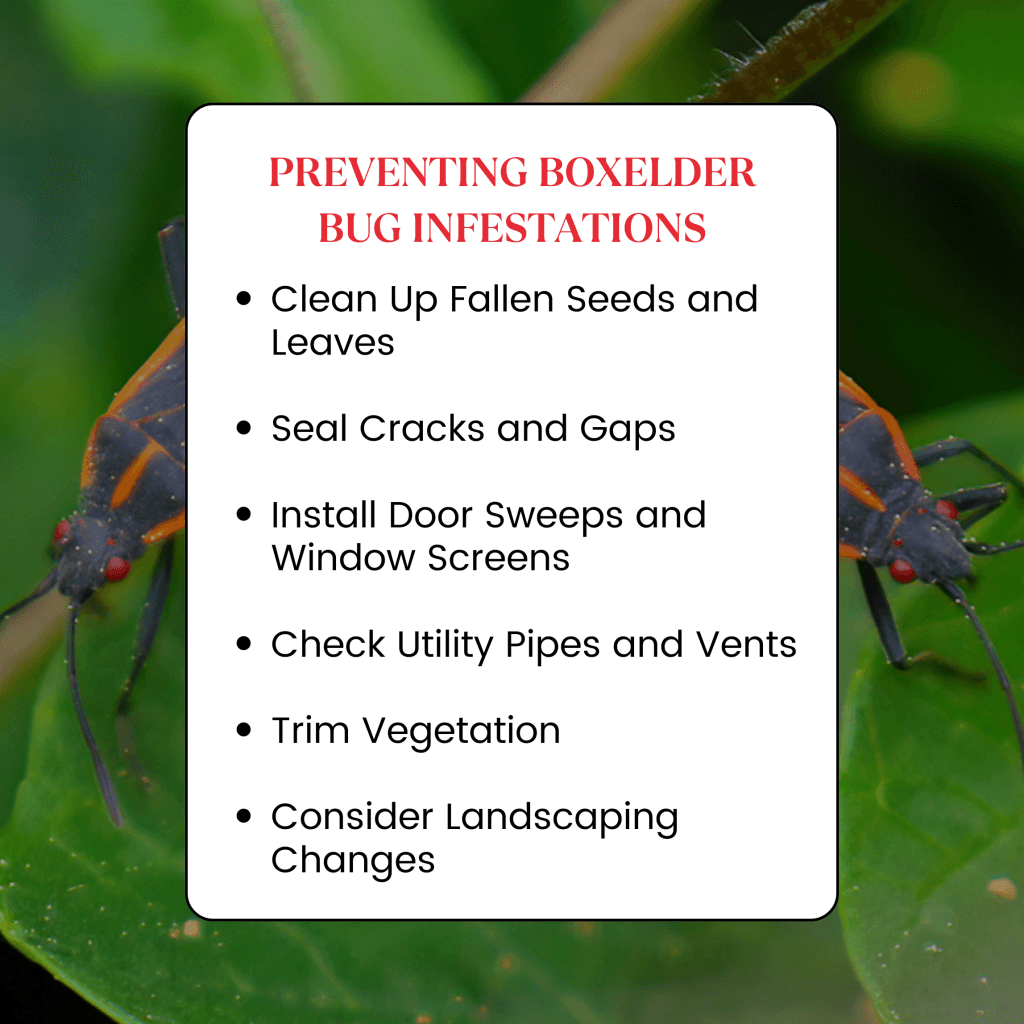Boxelder bugs often appear in yards, especially during warmer months. Although they seem harmless, they become a nuisance when they invade homes in large numbers. Understanding their diet and behavior helps prevent infestations and keep them out of your living spaces. This blog will explore what boxelder bugs eat, why they’re attracted to certain areas, and how to manage them around your home.
Overview of Boxelder Bugs
Boxelder bugs (Boisea trivittata) are small insects with black bodies and red or orange markings. They thrive in areas with boxelder trees, their main food source. These bugs are most active in warm months, gathering on sunny sides of trees, buildings, and rocks. As fall approaches, they seek warm, sheltered spots to overwinter, often leading them indoors. While they don’t harm humans, their presence can be bothersome, especially when they gather indoors in large numbers.
While boxelder bugs don’t bite or sting humans, their presence can be bothersome, especially when they gather indoors in large numbers. Their tendency to cluster in homes can create an unpleasant situation, though they pose no direct threat to people.

Primary Diet of Boxelder Bugs
Boxelder bugs have a fairly specific diet that primarily revolves around certain types of trees–here’s what they typically eat:
- Boxelder Trees:
- Boxelder bugs are closely associated with boxelder trees, which are part of the maple family. These trees are their preferred food source.
- The bugs primarily feed on the seeds, leaves, and other parts of the boxelder tree. They use their piercing-sucking mouthparts to extract juices from the tree’s tissues, which provide them with essential nutrients.
- Boxelder seeds, in particular, are highly attractive to these bugs, which is why large groups of them are often found congregating around boxelder trees during the spring and summer months.
- These trees can be found in various regions across North America, making boxelder bugs a common pest in many areas.
- Maple and Ash Trees:
- In addition to boxelder trees, boxelder bugs are also attracted to other species within the maple family, as well as ash trees.
- When boxelder trees are not readily available, these bugs will feed on the developing leaves and seeds of maple and ash trees in a similar manner.
- This dietary flexibility allows boxelder bugs to thrive in different environments, particularly in areas where boxelder trees are less common but other suitable trees are present.
- Other Plant Material:
- While boxelder bugs primarily feed on the trees mentioned above, they are known to occasionally feed on other plant material. However, this is less common and usually occurs when their preferred food sources are scarce.
Seasonal Feeding Habits
Boxelder bugs’ feeding habits change with the seasons, which directly influences their behavior and the likelihood of them becoming a nuisance in homes.

Spring and Summer: Active Feeding Period
During the spring and summer months, boxelder bugs are highly active. As trees begin to grow new leaves and seeds, these bugs emerge from their winter hiding spots and start feeding on the fresh growth. This period is critical for their development, as the nutrients they obtain from the trees help them reproduce and expand their populations. You may notice boxelder bugs clustering on the trunks and branches of trees, particularly boxelders, as they feed. While their feeding rarely causes significant damage to healthy trees, the sheer number of bugs can be concerning for homeowners.
Fall and Winter: Seeking Shelter
As the weather cools in the fall, boxelder bugs begin to seek out warm, sheltered areas to spend the winter. Their feeding activity slows down significantly during this time, and they focus more on finding a suitable place to hibernate. This is when they become a greater nuisance, as they often seek shelter in homes, particularly in attics, wall voids, and other hidden areas. While they may still feed on whatever food sources they can find, their primary goal during the colder months is survival. Homeowners often first notice them on warm, sunny days in the fall, when they congregate on the exterior walls of buildings, basking in the warmth before finding their way inside.
Attraction to Homes
Boxelder bugs are often found near homes, especially in the fall when they are seeking shelter for the winter. Homes provide the warmth and protection these bugs need to survive the colder months. Additionally, the food sources around your home, such as fallen seeds and leaves from trees, can attract boxelder bugs. They are particularly drawn to sunny areas on the exterior of buildings, where they can bask in the warmth before finding their way inside. Once inside, they often become a nuisance, as they can gather in large numbers in attics, basements, and other hidden areas. While they do not cause structural damage or pose a direct threat to humans, their presence can be unsettling and difficult to manage without proper pest control measures.
Preventing Boxelder Bug Infestations

To prevent boxelder bugs from becoming a problem in your home, it’s important to remove things they eat and reduce the attractiveness of your yard. Here are some tips:
- Clean Up Fallen Seeds and Leaves: Regularly rake and dispose of seeds and leaves from boxelder, maple, and ash trees to reduce their food supply.
- Seal Cracks and Gaps: Inspect your home for cracks or gaps, especially around windows, doors, and the foundation. Seal these openings with caulk or weatherstripping.
- Install Door Sweeps and Window Screens: Ensure doors and windows are tightly sealed. Repair any damaged screens to prevent bugs from entering.
- Check Utility Pipes and Vents: Seal gaps around utility pipes and vents where boxelder bugs might sneak in.
- Trim Vegetation: Keep shrubs, bushes, and tree branches trimmed back from your home’s exterior to reduce access points.
- Consider Landscaping Changes: Replace boxelder trees with less attractive species or maintain the area around them to discourage bugs.
For more severe infestations, it’s often best to call in a professional pest control company. They can assess the situation and provide targeted treatments to eliminate boxelder bugs and prevent them from returning. Professional pest control services can offer long-term solutions that are more effective than DIY methods, ensuring that your home remains bug-free.
Conclusion
Boxelder bugs may seem like a minor nuisance, but understanding what they eat and their behavior can help you keep them out of your home. By removing food sources and making your yard less inviting, you can reduce the chances of a boxelder bug infestation.
Additionally, taking proactive steps to seal entry points and maintain your home’s exterior can go a long way in preventing these bugs from becoming an indoor problem. If you’re dealing with these pests and need assistance, don’t hesitate to contact a professional pest control company for expert advice and solutions. With the right approach, you can enjoy a boxelder bug-free home all year round.

